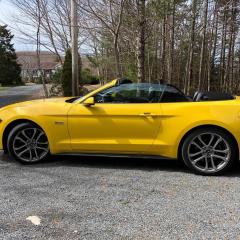D. I. Y. Watch Timing Machine.
-
Similar Content
-
Recently Browsing
- No registered users viewing this page.
-
Topics
-
Posts
-
By LittleWatchShop · Posted
I have both sets and use the K&D 99% of the time. Yes, you have to be careful with the pin. I use a screwdriver to carefully release the pin from the spring. Some skill is involved. I have also modified/replaced the pins in the arbors as necessary. Yeah, you would think a tool would not require modification, but such is the world of watchmaking. There is no perfect tool. Each watchmaker must the tools to his skill, or vice versa. -
I have the 8-11mm K&D but it doesn't do a great job with modern mainsprings, or I have had terrible luck. The arbor pin protrudes too much and I have damaged more springs trying to disengage the arbor than I have successfully wound and inserted. It seems easier to use with old carbon steel springs. My Watchctaft set gets far more use, though I have to get creative to wind left hand springs
-
By RichardHarris123 · Posted
It depends on what the gaskets are made from but silicone lubricant should work. Spray or rub on a generous amount, put in a sealed bag and wait a couple of days. Test for softness and wipe off the excess. -
For hardened gaskets, an experienced watchmaker told me he usually found heat to be the best to soften them up. I tried that on a '70's Tissot where the gasket had turned to essentially epoxy to no avail, but eventually got it off with a 5700 case back opener using a crowbar for leverage to turn the wheel.
-
By HectorLooi · Posted
Yes. Small diameter ladies watches are a lot harder to open. Sometimes it's due to dried up sweat and organic matter. I usually give the watch back a good scrub with a wet toothbrush to soften and remove any crud first. If that fails, a spray of wd40 and leaving it for a couple of hours helps. I think hardened gaskets also add to the difficulty. BTW does anyone have ideas on softening hardened gaskets?
-











Recommended Posts
Join the conversation
You can post now and register later. If you have an account, sign in now to post with your account.
Note: Your post will require moderator approval before it will be visible.